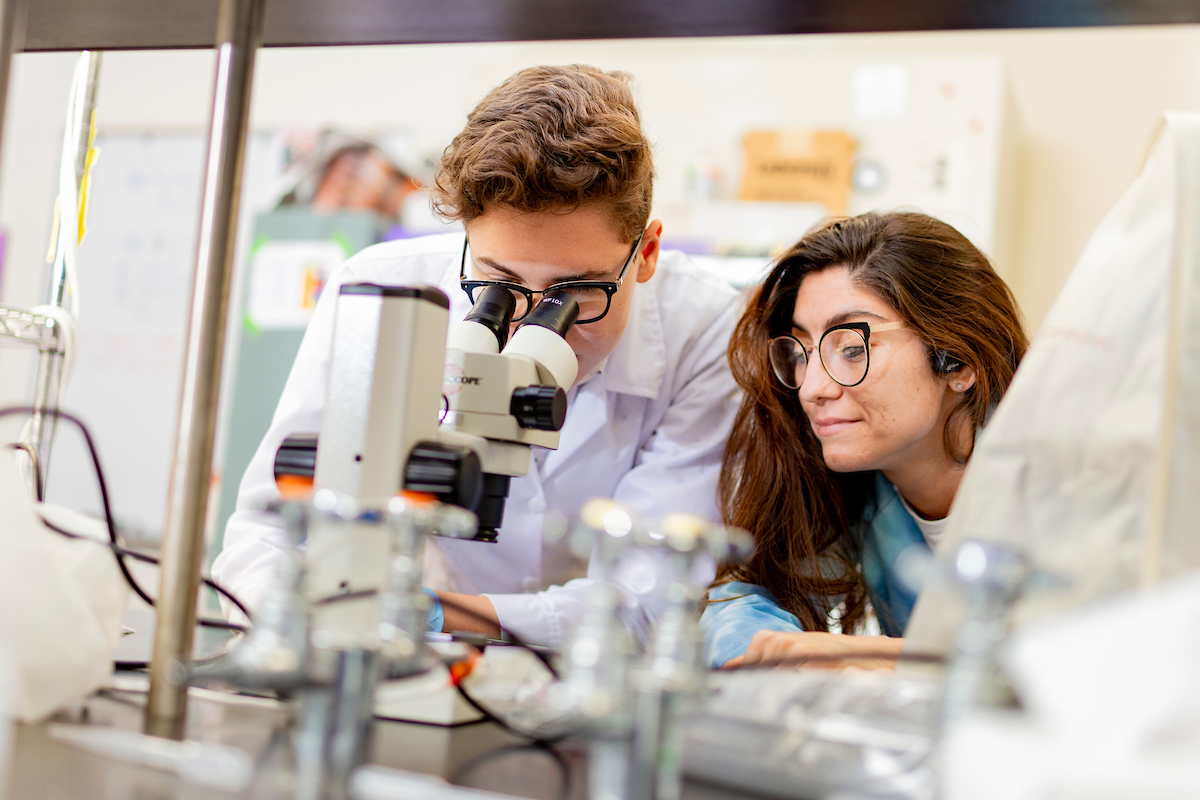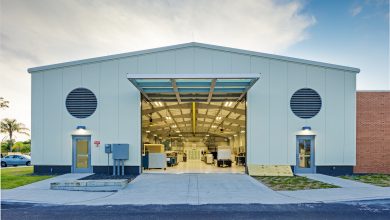4 Projects Prepping Seniors for Careers in Biomedical and Chemical Engineering/Sciences
The university’s flagship project and a Panther rite of passage, the engineering and science student design and research program has existed in some form or another almost since the university’s inception in 1958.
A multidisciplinary capstone project for all science and engineering seniors, senior design is a yearlong course in which students bring a project from concept to completion, simulating a real-world work environment and culminating in the Northrop Grumman Engineering and Science Student Design Showcase, where teams present their work and field questions from peers, faculty, industry professionals and local leaders.
Due to the COVID-19 pandemic, this year’s seniors, like the rest of the world, had to adapt to unforeseen challenges, like in-person class cancellations and short-notice closure of the L3Harris Student Design Center. While most students’ projects look a little different from how they had envisioned them at the beginning of the year, we are proud to continue the tradition of showcasing them to their peers, community and, most important, prospective employers through the Northrop Grumman Virtual Student Design Showroom.
Prepare to be impressed—the showroom hosts descriptions, photos, video presentations, display boards and more for the more than 100 projects completed this year.
Here, we’ve compiled a list of
4 Projects Prepping Seniors for Careers in Biomedical and Chemical Engineering/Sciences
1. Growing Food on Mars: Can it be Done?
Even here, on Earth, food can get expensive. Can you imagine if you had to factor in interplanetary transportation costs? As human spaceflight expands, startup and resupply mission costs will grow substantially.
While Martian regolith, the dust and rocks on the planet’s surface, is not naturally conducive to plant growth, one senior design project explored in situ resource utilization (ISRU), or the identification, collection, processing and use of resources like water, minerals and light, to remediate the regolith into soil capable of growing food for astronauts—a cheaper, more sustainable alternative.
“As we do this, we can learn how to help farmers on Earth, who are impacted by climate change. Farmland that is turning into desert can be made fertile again, and agricultural productivity could be increased to meet the growing demand of Earth’s increasing population,” team lead Hannah Blackburn says in the video.
Learn more about how the group used Martian regolith simulant to conduct the experiment.
Team Members
Hannah Blackburn (team lead), Cynthia Montanez, Nathan Hadland
Faculty Advisor
Andrew Palmer, associate professor, biomedical and chemical engineering and sciences, ocean engineering and marine sciences
2. Climbing Advantage: A Morphological Analysis of Mangrove Tree Crabs’ Dactyl Microstructures
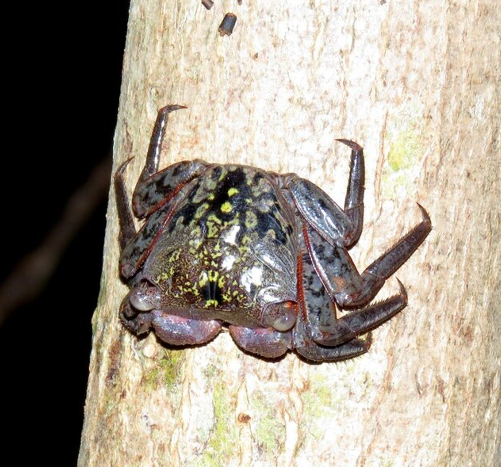
Mangrove tree crabs are known for their excellent climbing abilities on several surfaces and in various conditions: vertical, horizontal, rough, smooth, wet, dry. So exemplary are their skills that they could prove ideal models for a biomimetic climbing device to improve on current climbing robotics.
To learn more about the specific advantages the crabs have on the climbing front, one senior design project investigated the functional characteristics and morphology of bristle-like microstructures, called setae, on crabs’ leg dactyls. Among other observations, members aimed to determine if the length of the crab’s carapace, or hard upper shell, affects the:
- Number of pockets of setae
- Number of setae within each pocket
- Total number of setae
- Percent coverage of setae between joints one and two
- Average aspect ratios of setae
“The various patterns observed on the crab dactyls could provide insight on their ability to climb a variety of surfaces under different conditions.”
Learn more about the experiment’s findings and analysis.
Team Members
Samara Zinman (team lead), Andrew Rivera, Eagle Richter
Faculty Advisor
Ralph Turingan, professor, ocean engineering and marine sciences
3. Chemotaxis in Juvenile Bonefish
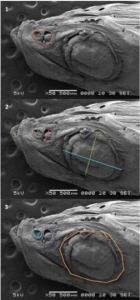
Young Elopomorpha, a superorder containing a variety of fish, including bonefish, ladyfish and eels, are both inherently vulnerable and imperative to the local Florida fishery. However, little is known about how larval and juvenile Elopomorpha adapt to their environments.
To increase knowledge on the topic, one senior design team explored the fish’s chemotaxis—the movement of an organism in response to a varying concentration of diffusible chemicals in its environment. Building on a senior design project from last year, members used a Y-maze to determine if juvenile bonefish use their sense of smell for finding food, avoiding predation or homing.
“Understanding chemotaxis allows for a better understanding of Elopomorpha behavior and morphology, which in-turn can improve recruitment success and help recover their populations in South Florida.”
Learn more about the team’s process and results.
Team Members
Mason Thurman, Noah Haag, Katie Wilson
Faculty Advisor
Jonathan Shenker, associate professor, ocean engineering and marine sciences
4. Microplastic Water Contamination: What it Looks Like in the Indian River Watershed
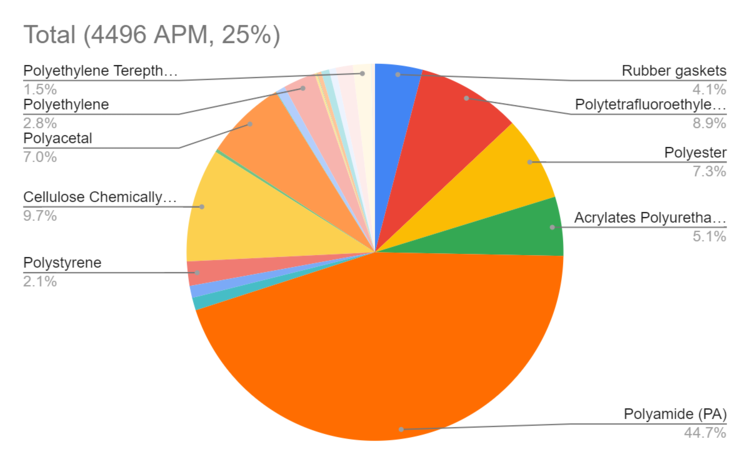
Nearly ubiquitous anthropogenic particulate matter (APM) in water supplies around the world pose a threat not only to aquatic species but also to humans and entire ecosystems.
“Despite knowledge of this growing worldwide problem, efforts to characterize the composition and distribution of APMs on water sources and wildlife in Florida has become a concern only recently,” says Andrew Link, a student whose senior design project aimed to obtain definitive proof that APM in the Indian River Watershed affect multiple marine fish species and, consequently, humans.
Using fish tissue and stomach samples from the Ocean Resources Conservation and Assessment, Link found that the Indian River Watershed has a clear abundance of APM, more than 80% of which came from six chemicals that, if reduced, would have the largest impact on the regional ecosystem.
Learn about the experiment details and results.
Team Member
Andrew Link
Faculty Advisor
Christopher Chouinard, associate professor of chemistry, biomedical and chemical engineering and sciences
Impressed and ready for more? Check out:
- 5 Projects Prepping Seniors for Careers in Computer Engineering and Sciences
- 2 Projects Prepping Seniors for Careers in Mathematical Sciences
- 5 Projects Prepping Seniors for Careers in Ocean Engineering and Marine Sciences
- 4 Projects Prepping Seniors for Careers in Aerospace, Physics and Space Sciences

